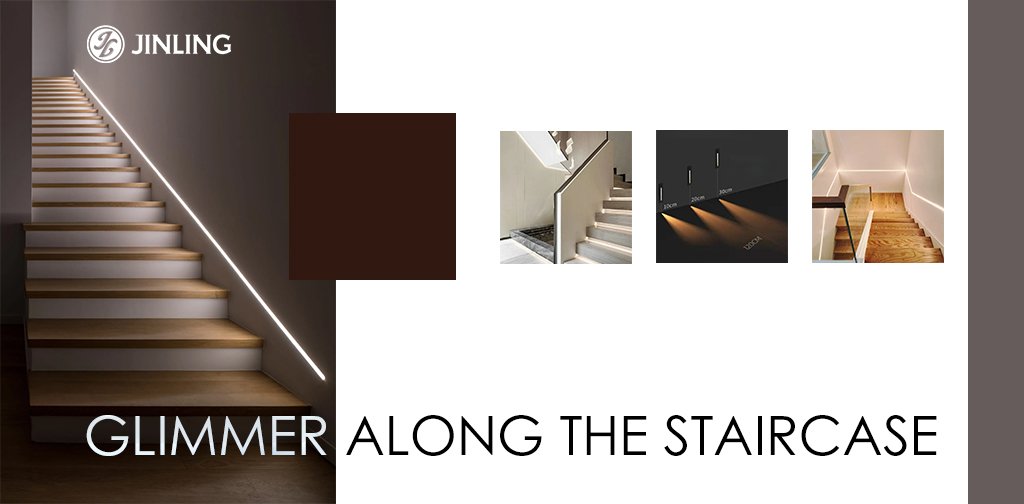In interior design, lighting design is a crucial aspect in shaping the spatial atmosphere and enhancing practicality. As a vertical transportation hub connecting different floors, the lighting design of stairs cannot be overlooked. An excellent staircase lighting design can not only meet the lighting requirements but also enhance the spatial hierarchy, play a guiding role, and achieve the aesthetic effect of "seeing the light but not the lamp".
Next, let's delve into various aspects of staircase lighting design.
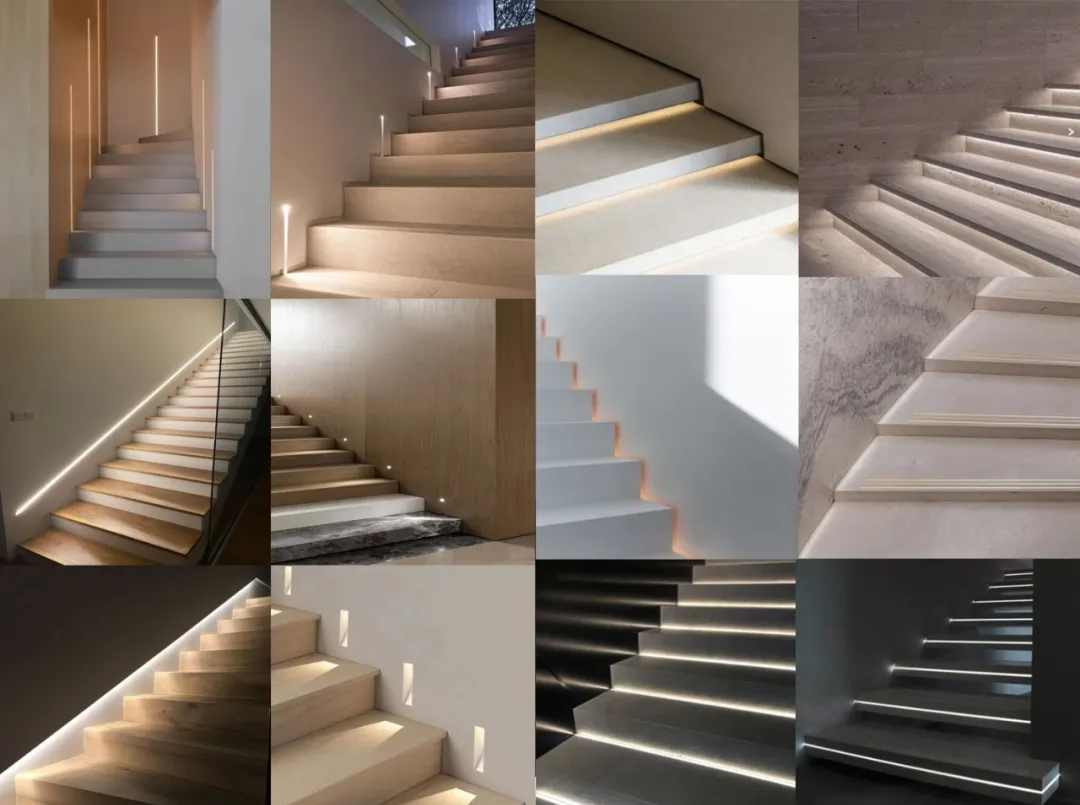
1. Types of Staircase Lighting
1.) Step Lighting
It is mainly used to meet the basic lighting needs when people are walking. It can clearly illuminate each step, avoiding safety issues such as tripping due to insufficient light. Step lighting is usually installed on the front edge or side of the step. Through ingenious concealed designs, it provides lighting while maintaining the simple and beautiful appearance of the entire staircase.

2.) Handrail Lighting
In addition to having certain lighting functions, handrail lighting also has strong directional guidance. The lights installed along the handrail can form a continuous light strip visually, guiding people up and down the stairs. This lighting design is not only practical but also adds a unique decorative effect to the staircase, making the staircase a visual focus in the space.
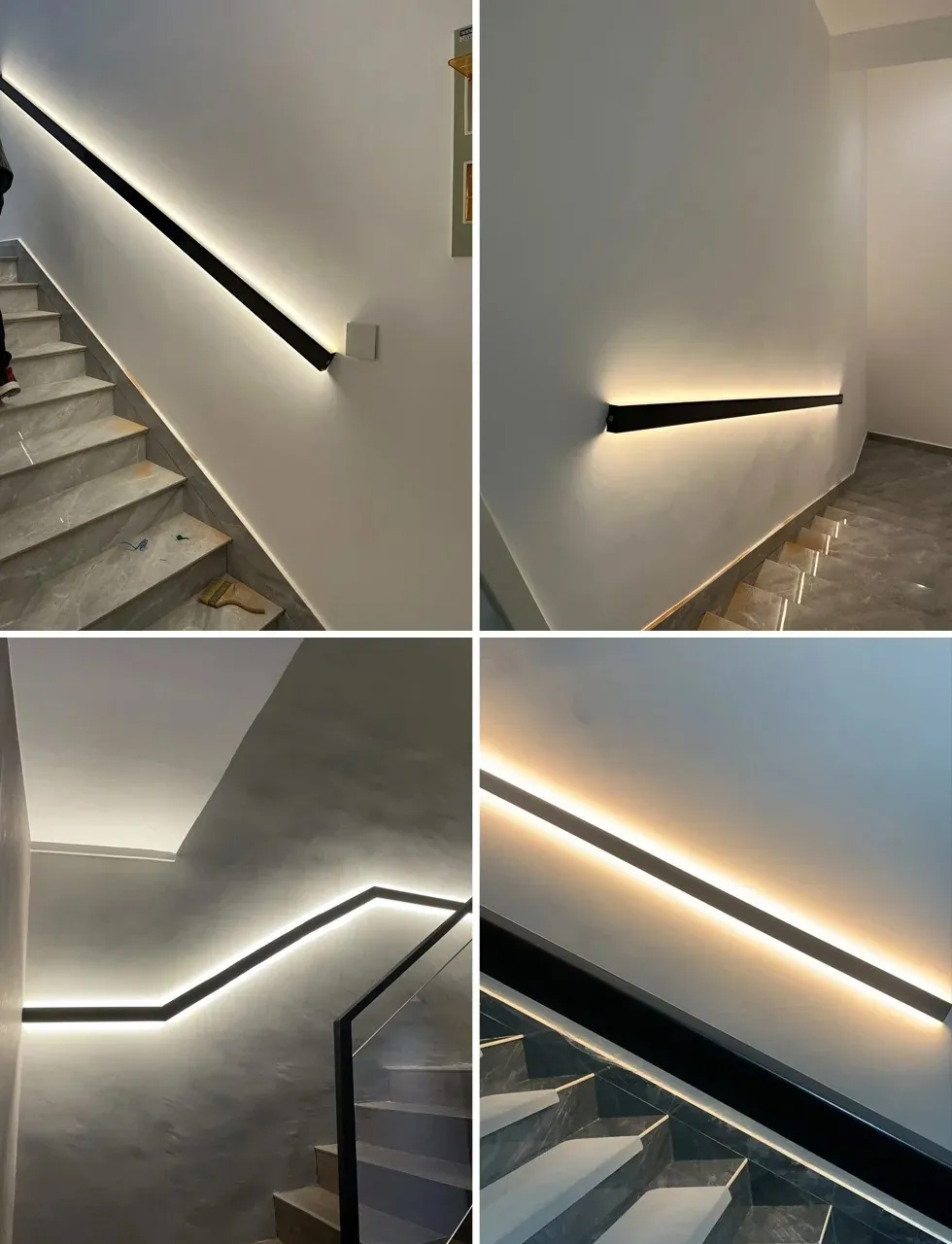
3.) Stair Edge Lighting
Stair edge lighting also has the dual functions of lighting and direction guidance. It is set along the edge of the staircase, outlining the contour of the staircase, making the staircase clearly distinguishable even in the dark. Cooperating with the handrail lighting, it can further strengthen the linear sense of the staircase and enhance the three - dimensionality of the space.
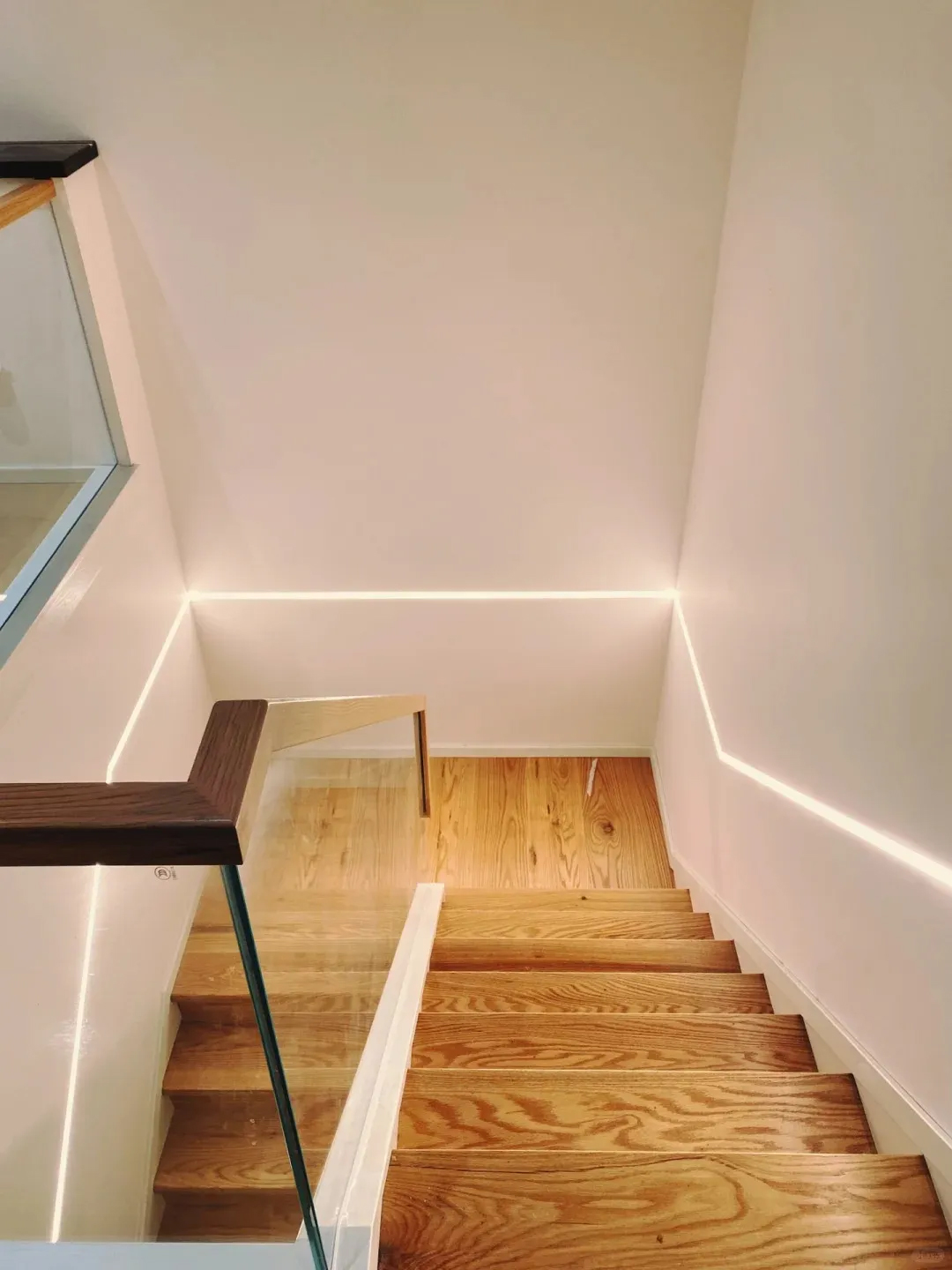
4.) Baseboard Lights
Stair baseboard lights are special lamps installed on the stairs for auxiliary lighting. They are usually installed on the steps of the stairs, on the side of the steps, or against the wall. The height is generally 15 - 30 cm from the ground, which can be adjusted according to personal habits.
The role of stair baseboard lights is very significant. From a safety perspective, it can illuminate the stairs when the light is dim, effectively preventing people from tripping when going up and down the stairs, reducing the occurrence of falling accidents, and ensuring safe passage at night or in low - light conditions. In terms of decoration, its simple and compact appearance can be integrated with the overall decoration style of the stairs. It does not occupy too much space and can create a warm and comfortable atmosphere, enhancing the aesthetic and hierarchical sense of the space. In addition, many stair baseboard lights have a sensor function, which can automatically turn on when people approach and turn off when they leave, being both convenient and energy - saving.
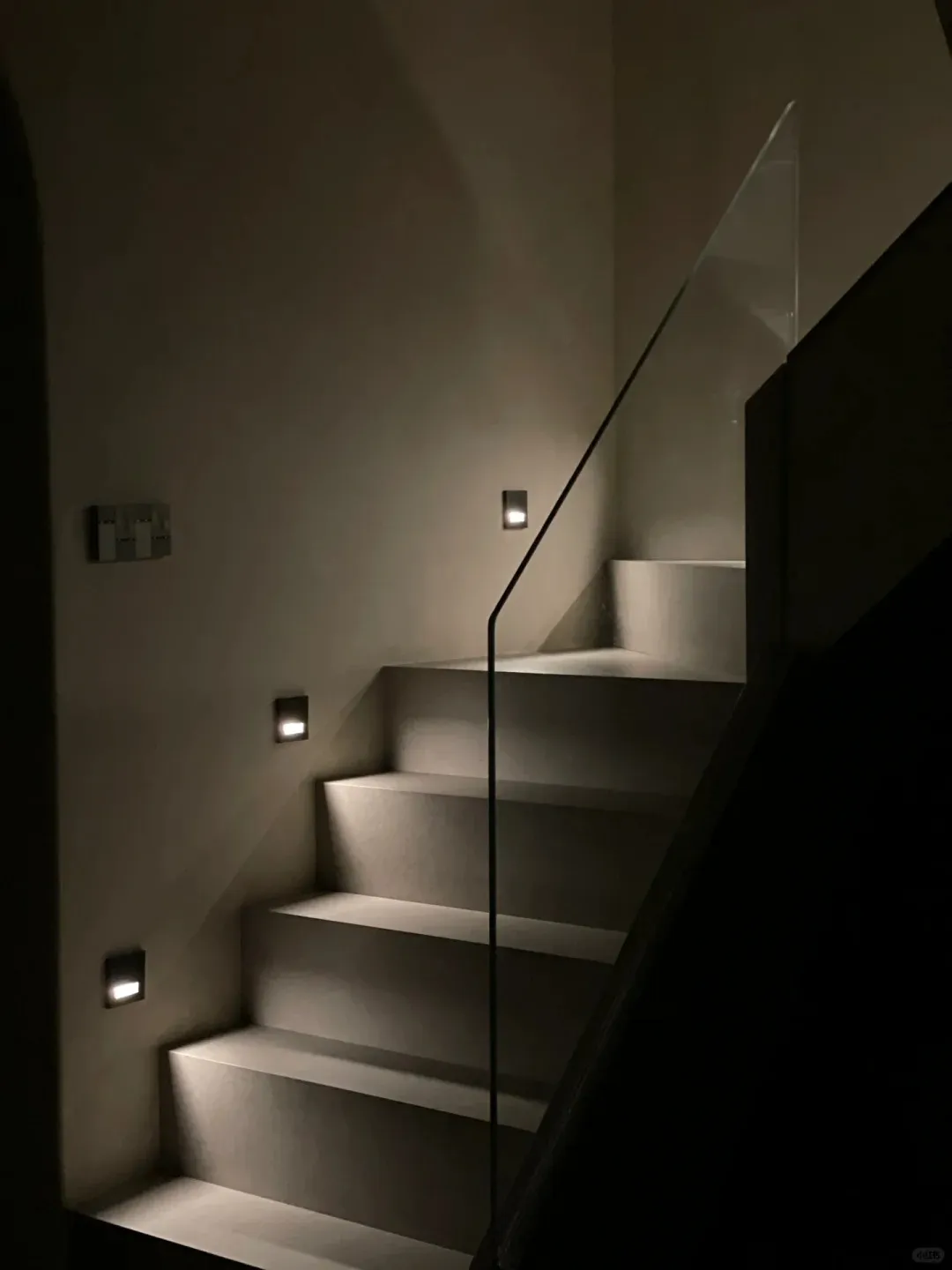
2. Design Forms of Staircase Lighting
1.) Hidden lamp
This is an important goal pursued in modern staircase lighting design. By hiding the lamps inside the steps, handrails, or staircase structure, and using principles such as reflection and refraction, the light is evenly and softly emitted, avoiding the glare caused by the direct exposure of the lamps, and creating a simple, elegant, and hierarchical light environment.
2.) Enhancing Spatial Hierarchy
Reasonably arranging different types of staircase lighting can form multiple lighting levels in the vertical direction. Step lighting illuminates the surface of the steps, while handrail lighting and stair edge lighting outline the contour of the staircase. Lights with different brightnesses and positions intersect with each other, enriching the visual effect of the space and making the space where the staircase is located more three - dimensional and profound.
3.) Creating an Atmosphere
According to different space styles and usage scenarios, choosing the right light color, brightness, and irradiation angle can create various unique atmospheres. Warm yellow light can create a warm and comfortable atmosphere, which is suitable for home spaces; while cool white light can create a simple, modern, and technology - rich atmosphere, which is often used in the staircase design of commercial or office places.
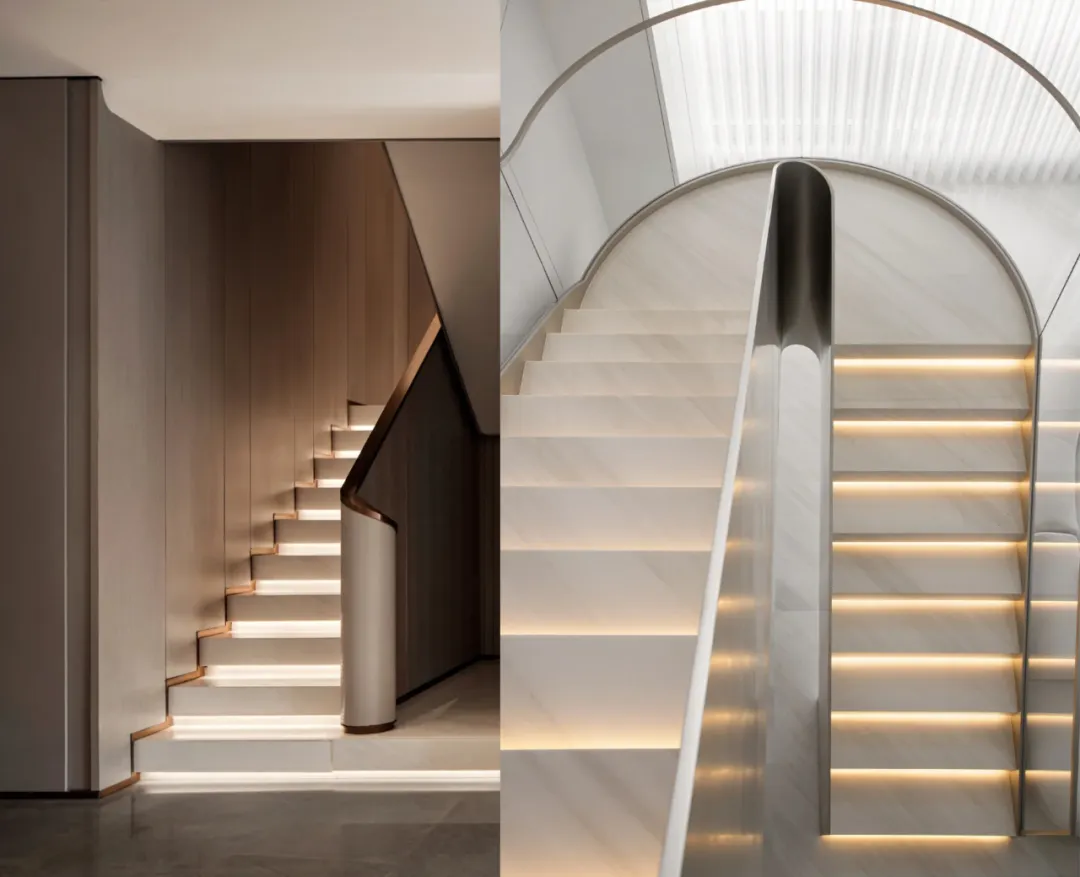
3. Construction Techniques of Staircase Lighting
1.) Preparation in Advance
Before construction, 220v electrical wires need to be reserved on one side of the wall to provide power for the subsequent installation of lamps. At the same time, according to the material, structure, and design plan of the staircase, determine the installation location and method of the lamps, and prepare the corresponding construction tools and materials.
I. Construction of Stone Step Lighting
- Base Course Treatment:
It is necessary to ensure that the staircase base course is solid, stable, and flat, and the allowable error is strictly controlled within 3 millimeters. If the base course is not flat, cement mortar should be used for leveling work to create a good foundation for subsequent construction.
During the pre - construction period, the wire routing should be carefully planned, and the power connection positions should be accurately reserved according to the design requirements to facilitate the subsequent installation of the light strip. The reserved size of the lamp groove is very important. The depth should be 30 - 35mm, and the height should be 50 - 60mm. If the reservation is too narrow, it will be difficult to install the lamps; if it is too large, it is easy to trip people, affecting the use safety and aesthetics.
- Light Strip Installation:
The light strip is fixed by a card slot. First, firmly fix the metal card slot on the side or bottom of the step board. During the installation process, tools such as a level should be used to ensure that the card slot is horizontal and straight, and the deviation is controlled within a very small range.
After the card slot is fixed, carefully insert the light strip into the card slot. Pay special attention to the connection of the positive and negative poles of the light strip during the operation to ensure that the connection is correct. After the light strip is installed, it is necessary to conduct a power - on test immediately to check whether the light strip lights up normally. If there are any problems, troubleshoot and adjust them in time.
- Installation of Stone Step Boards:
Evenly apply structural adhesive on the back of the stone step board, especially at the edges in contact with the light strip, and apply a little more structural adhesive appropriately to enhance the bonding effect.
Accurately place the stone step board with the applied structural adhesive in the predetermined position and press it firmly to make it closely adhere to the base course. After placement, use a level again to check the flatness of the step board to ensure that it meets the construction standards.
After the structural adhesive is initially cured, carefully apply sealant at the joints and connections between the step boards. Through the filling of the sealant, the overall appearance of the staircase becomes more delicate and beautiful, and it also plays a role in waterproofing and dust - proofing.
- Wiring and Debugging:
Safely and firmly connect the wires of the light strip to the power supply. During the wiring process, strictly follow the electrical installation specifications to ensure that the wiring is firm and the insulation performance is good, preventing potential safety hazards such as electric leakage.
After the wiring is completed, adjust the lighting effect through the controller. The brightness, color (if it is a color - changing light strip), and flashing mode of the light can be adjusted according to actual needs until a satisfactory lighting effect is achieved.
2.) Construction of Illuminated Handrails
When installing illuminated handrails, pay special attention to the distance between the handrail and the wall and the installation height from the ground. The appropriate distance can not only ensure the stable installation of the handrail but also ensure that the lighting effect is not affected. Generally, the distance between the handrail and the wall should be determined according to the actual space and ergonomic principles to facilitate people's grasping; the installation height from the ground usually follows relevant building codes to ensure the comfort and safety of use.
3.) Construction of Stair Edge Lighting
Since the light strip generates heat during long - term use, sufficient heat dissipation space needs to be reserved during construction. At the same time, light strip products that meet safety standards must be selected to ensure that there are no potential safety hazards such as overheating during use. Ventilation holes or heat dissipation grooves can be set at the installation position of the light strip to help dissipate heat.
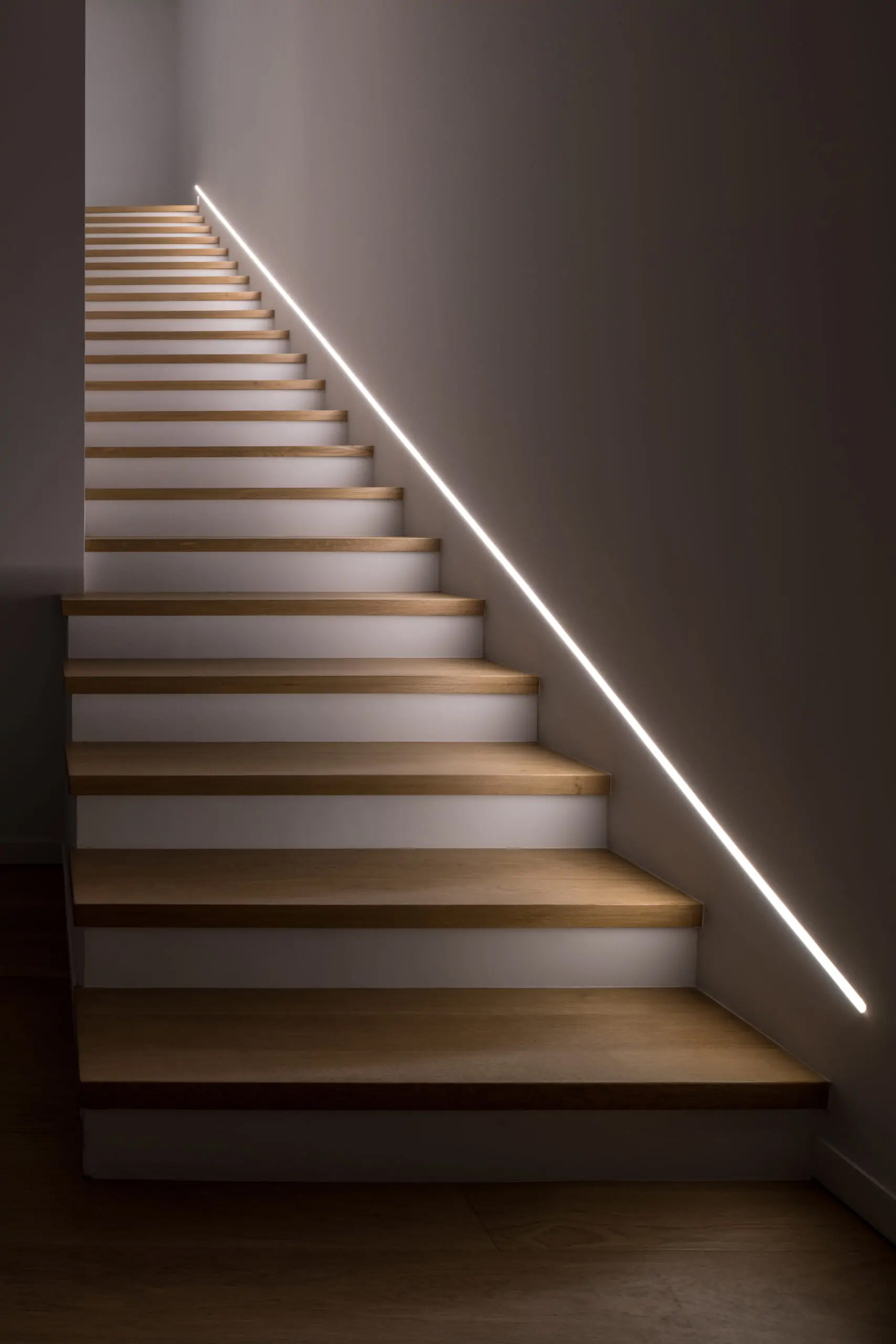
4.) Construction of Stair Baseboard Lights
- Pre-construction Preparation:
Purchase sensor - controlled baseboard lights in advance before the start of hydropower construction. According to the actual size of the baseboard lights, plan and groove the wall in advance to prepare for the subsequent installation of the baseboard lights.
- Hydropower Construction Embedding:
After completing the wire planning, embed the baseboard light bottom box to ensure that the position of the bottom box is accurate and coordinated with the overall hydropower layout.
- Stair Installation Key Points:
If the baseboard lights are installed on the stairs, they should be installed in the center of the stair tread to ensure the lighting effect and aesthetics.
- Height Determination Method:
The installation height of the baseboard lights is recommended to be between 15 - 30 cm, and the specific height can be determined according to personal usage habits. During the hydropower positioning link, it can be compared and measured on - site to find the most suitable height.
- Wall Treatment Measures:
After the baseboard lights are installed, when plastering the wall, a wire - mesh treatment can be carried out to effectively prevent the wall from cracking.
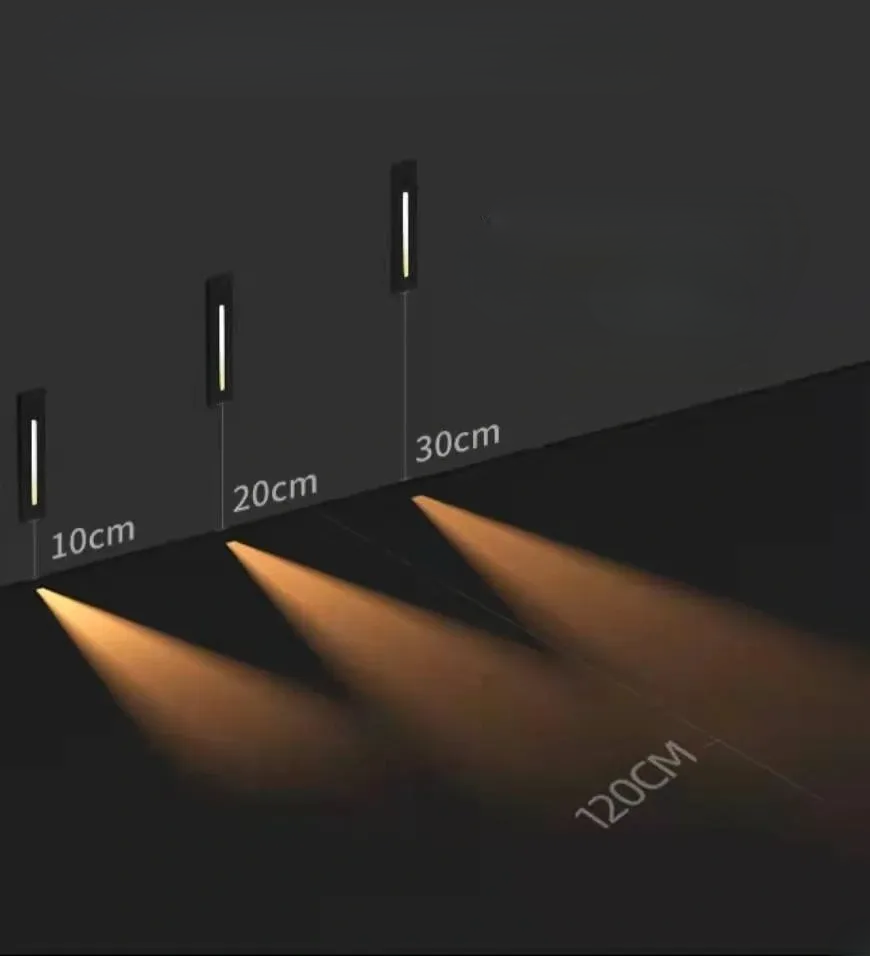
4. Precautions in Staircase Lighting Design
1.) Avoid Using Spotlight - type Downlights
Although spotlight - type downlights can provide strong concentrated lighting in some areas, they have serious drawbacks when used for staircase lighting. The light they emit makes the shadows too obvious, making it difficult for people to clearly distinguish the height difference of the stairs, increasing the risk of tripping and falling when going up and down the stairs. Therefore, in staircase lighting design, such lamps should be firmly avoided.
2.) Reasonably Set the Position of Foot Lights
As a common way of staircase lighting, foot lights need to be paid special attention to during installation. Whether going upstairs or downstairs, the light source of the foot lights should not directly appear in people's line of sight. If the light source shines directly into the eyes, it will cause glare, interfering with vision and affecting the accurate judgment of the staircase situation. The ideal installation position should be able to effectively illuminate the staircase steps while cleverly hiding the light source, such as setting it on the side below the step or embedded below the front edge of the step. Through ingenious shielding and reflection, the light is softly emitted.
3.) Carefully Select the Lighting Direction of Wall Lights
When choosing to install wall lights as part of the staircase lighting, pay special attention to the lighting direction. Avoid lighting the wall lights upwards, because this way people going downstairs will directly see the light source, which will also cause glare problems, affecting the visual effect and walking safety. Wall lights are preferably used to illuminate downwards, focusing the light on the staircase steps to provide clear and glare - free lighting for people going up and down the stairs.
From the elaborate layout of staircase lighting design, it is not difficult to find that it has similar ideas to the currently popular “masterless lamp” design concept. Staircase lighting design abandons the single - main - light model and realizes the integration of function and aesthetics through the combination of various auxiliary lamps such as step lights, handrail light sources, step light sources, and baseboard light sources.
The masterless lamp design is the same. It breaks the limitations of traditional main lights and uses a variety of lamps such as downlights, spotlights, light strips, and floor lamps. According to the functional requirements and atmosphere creation of different spaces, it conducts flexible combinations and layouts. This design method can not only create a more abundant and hierarchical light effect but also enhance the overall style of the space, endowing the space with unique charm.
